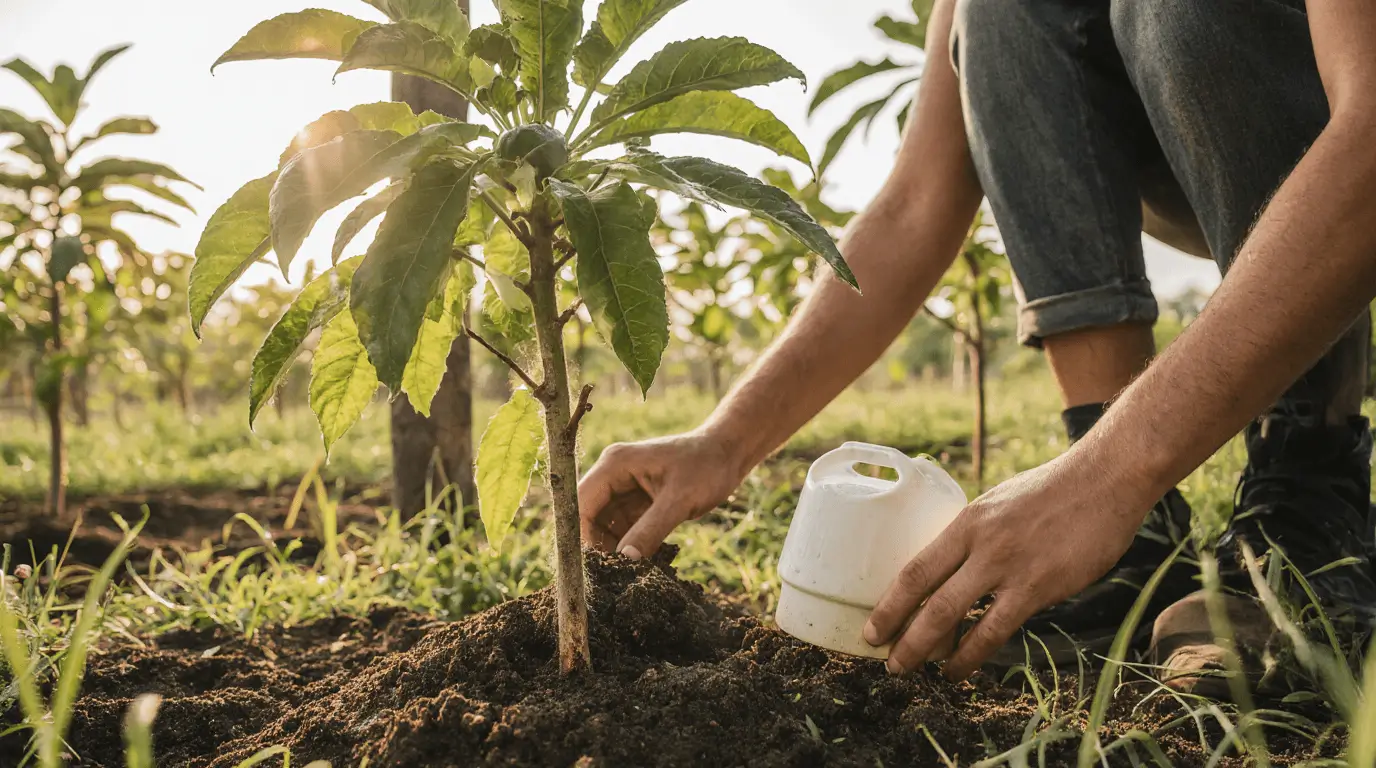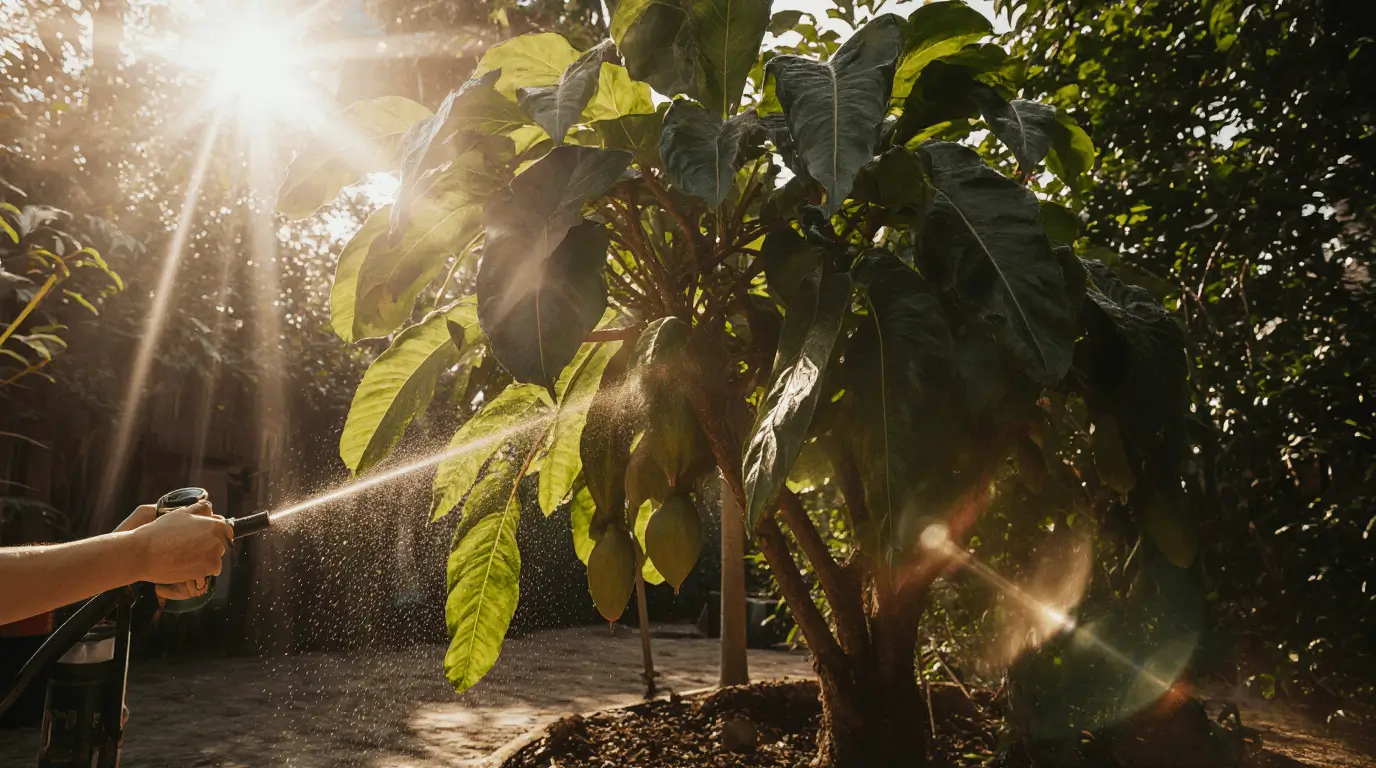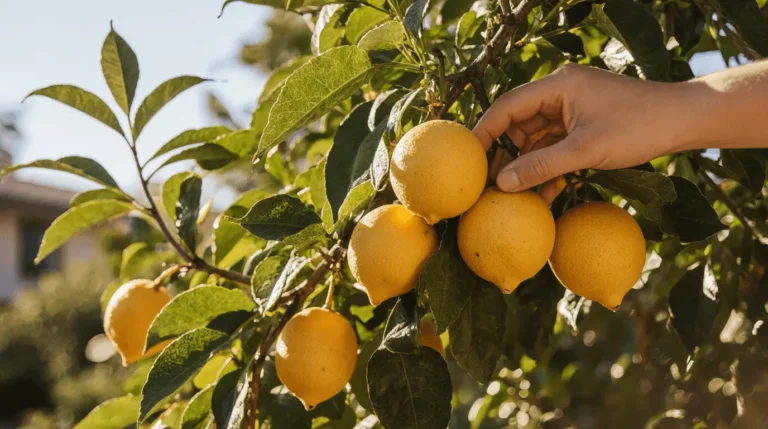In the world of horticulture, learning how to grow a Guanabana Soursop tree has been one of the most rewarding experiences for me. This unique plant thrives in warm, tropical climates, where it develops delicious fruit that offers a delightful fusion of strawberry, pineapple, coconut, and banana undertones. Its distinctive taste has gained great recognition, not just for flavor but also for its impressive health benefits. What I love most is how adaptable the tree is — you can nurture it in your garden or even in a container indoors if you manage the warmth and humidity properly. Watching the Soursop tree flourish under the right soursop tree care feels like growing a piece of the tropics right at home, a living symbol of patience and natural beauty.
Climate and Soil Requirements
When I first started growing Guanabana trees, I quickly learned how much they depend on the right environment to truly grow. These trees love tropical climates with a warm atmosphere, and if you can’t provide that outdoors, a humid greenhouse works wonderfully. The soil you use determines much of their growth, so creating the perfect bedding is essential. I found that well-draining soil combined with the right pH range 5.5-6.5 helps the Soursop trees flourish beautifully. Enriching the mix with organic matter, compost, and manure gives them the nutrients they crave, while keeping it free of rocks and debris ensures their roots stay healthy. For anyone starting this exciting journey, exploring Soursop tree-for-sale options online or planting from seeds can be a truly rewarding experience.
Points:
- Maintain a warm atmosphere or use a humid greenhouse.
- Use well-draining soil with a pH range 5.5-6.5.
- Add organic matter, compost, and manure to enrich the soil.
- Keep the bedding clear of rocks and debris.
- Start your journey with Soursop trees grown from seeds or bought online for a rewarding experience.
Planting
When I first decided to plant Soursop seeds at home, I discovered that success starts with proper preparation. You can find quality seeds in local nurseries, or they can be purchased online or even harvested from a ripe Soursop fruit. I always begin by soaking the seeds in warm water overnight to speed up germination, a step that makes a big difference in their growth. Once ready, I place them about half inch deep in a sterile seed-starting mix, ensuring they have the right balance of air and moisture. For those who prefer indoor plants, you can easily grow Soursop indoors by encouraging container growth in a well-drained container. Watching them sprout and develop has always been a truly delightful journey, one that combines patience with the joy of nurturing life.
Points:
- Source Soursop seeds from local nurseries, purchased online, or harvested from fresh Soursop fruit.
- Begin with good preparation by soaking seeds in warm water overnight.
- Plant about half inch deep in a sterile seed-starting mix for healthy germination.
- Try container growth if you prefer to grow Soursop indoors as indoor plants.
- Enjoy the delightful journey of seeing your growth efforts come to life.
Care and Maintenance
Caring for Guanabana Soursop trees takes time, effort, and a true understanding of their needs. When I started learning Soursop tree care, I realized how important the right organic fertilizer is.

In the first year, I use about a quarter pound twice a year, and then increase it to half a pound as the tree matures. Maintaining soil health plays a huge role in steady tree growth—I make sure to add compost yearly to hold soil moisture and prevent weeds from competing for nutrients. Regular pruning also helps boost pollination and encourages better fruiting. I always mulch around the base, adding humus and organic matter, which keeps the roots strong and the soil rich. Following these steps has made my growing experience rewarding and my trees beautifully healthy all year long.
Pests and Diseases
When caring for mature soursop trees, it’s vital to stay alert against pests and diseases that can threaten their existence and reduce fruit production. I’ve often faced challenges with mealybugs, scale insects, and potato leaf hoppers, which attack the leaves, branches, and fruits, causing serious harm. Regular observation and inspection are key parts of your first line of defense. Early detection of any infestation or disease helps prevent damage before it spreads. Sometimes, fruit rot or other problems may occur, but a quick response can make all the difference. Taking action like removing affected parts, applying pest controls, and even seeking professional help when needed ensures healthy trees and continued growth. With consistency and care, every inspection and timely measure keeps your garden thriving.
Harvesting
Watching my Guanabana Soursop tree mature in the garden has been one of the most fulfilling parts of growing this tropical provider.As a true bearer of unique fruits and delightful fruits, it rewards patience with a sweet bounty after about 3-5 years. The timeline for fruiting depends on several factors, including soil quality, climate, and consistent fertilizer use. From my own experience, being patient and carefully tending to the tree makes a big difference. Practicing proper Soursop tree care ensures a steady yield and keeps the soil and roots healthy enough to support ongoing production year after year.
Read Also: Tropical Fruit Trees: Grow Exotic Paradise at Home (Grow Guide)

Conclusion
Learning how to grow a Guanabana Soursop tree is more than just a gardening project—it’s a fulfilling journey that connects you with nature’s tropical beauty. From creating the right climate and soil conditions to nurturing the seeds, providing regular care and maintenance, and protecting your plant from pests and diseases, every step adds to the rewarding experience of watching your Soursop tree thrive. With patience, organic care, and proper pruning, you can enjoy a healthy, fruit-bearing tree that brings the exotic taste of the tropics right to your home garden or even indoors. Growing your own Soursop tree truly becomes a symbol of dedication, patience, and the joy of cultivating life.
Read Also: Natural Healing & Wellness: Nature’s Remedies Guide

FAQs
Q1: Can I grow a Guanabana Soursop tree indoors?
Yes! You can successfully grow a Soursop tree indoors if you maintain proper warmth, humidity, and sunlight. A humid greenhouse or well-lit indoor space is ideal.
Q2: What is the best soil for growing a Soursop tree?
The best soil is well-draining and slightly acidic, with a pH of 5.5–6.5. Enrich it with organic matter, compost, and manure to support healthy root development.
Q3: How long does it take for a Guanabana tree to bear fruit?
A Soursop tree usually starts fruiting within 3–5 years, depending on soil quality, climate, and consistent care.
Q4: How often should I fertilize my Soursop tree?
In the first year, apply ¼ pound of organic fertilizer twice a year, increasing to ½ pound as the tree matures for optimal growth.
Q5: What common pests affect Soursop trees and how can I manage them?
Watch for mealybugs, scale insects, and leafhoppers. Regular inspections, removing affected parts, and natural pest control methods help keep your tree healthy.
Q6: Can I start growing Soursop from seeds?
Absolutely! You can grow Soursop from seeds—just soak them in warm water overnight before planting about ½ inch deep in a sterile seed-starting mix for better germination.





[…] Read Also: The Sweet Reward of Growing Your Own Soursop Tree […]